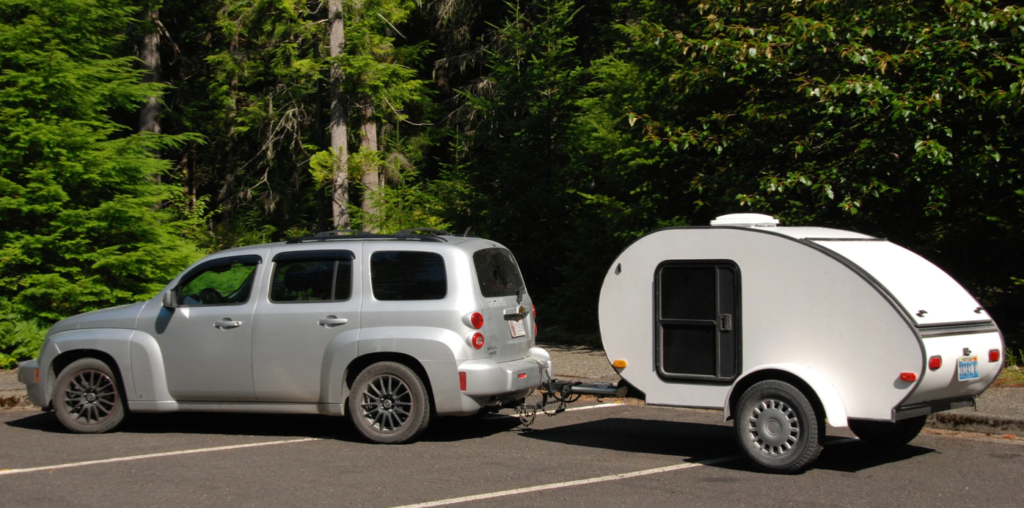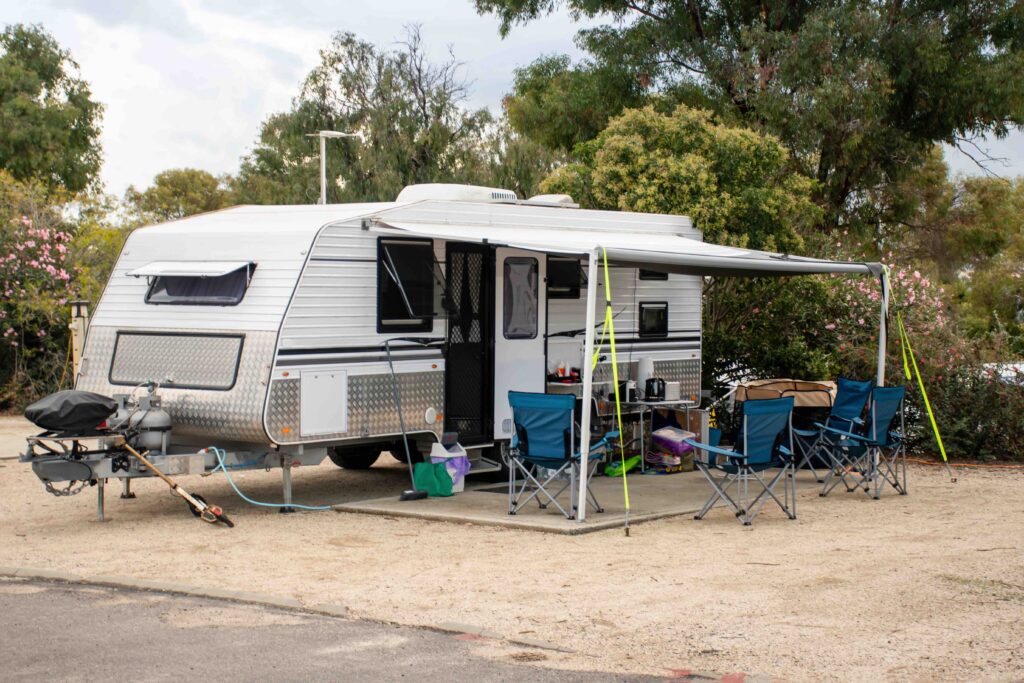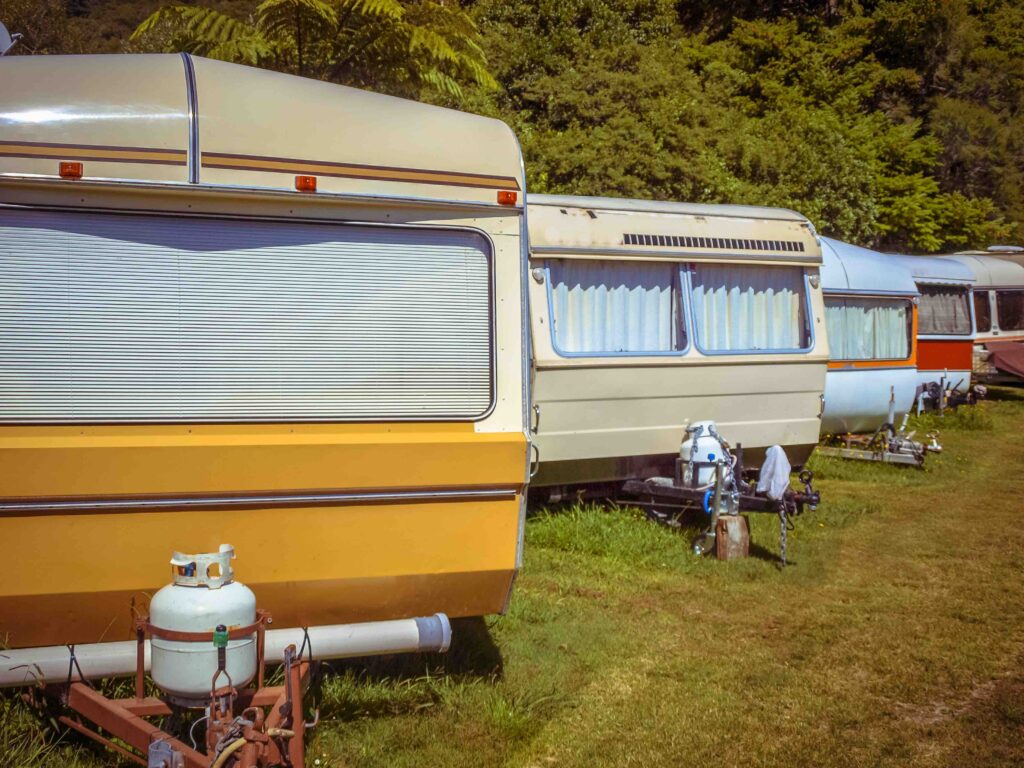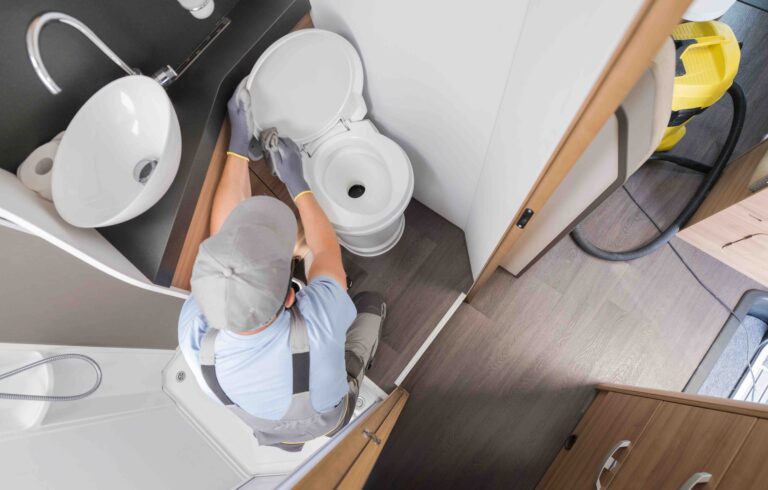How to choose the right caravan for your needs

Hi, I chat with people all the time and this questions regularly comes up . Basically a bit of research and a understanding of your particular needs are whats required .
Choosing the right caravan is all about finding a balance between your needs, preferences, and budget. Consider what you want out of your caravanning experience and weigh the pros and cons of each type before making your final decision.
Choosing the Right Caravan

Understanding the Different Types of Caravans
If you’re new to caravanning, choosing the right caravan can be overwhelming. There are many different types of caravans available, each with its own unique features and benefits. One popular type is the traditional ‘box’ caravan that is towed from behind your vehicle.
These come in a range of sizes and layouts, with some models even including a shower and toilet. Another option is a pop-top caravan which allows for easy storage as they have a lowered roof that can be lifted up when in use, other articles we have on caravanning can be found here

There are also off-road caravans available for those who want to travel beyond paved roads. These are built to withstand harsh conditions and often include features like reinforced chassis, higher ground clearance, and larger water tanks.

Weighing the Pro’s and Cons’s
It’s important to consider the pros and cons of each type of caravan before making your purchase. A traditional box caravan may offer more space but can be cumbersome to tow while a pop-top offers compact size for easier towing but requires more setup time once parked. Off-road caravans have stronger build quality and greater ability to venture off hard surfaces, but generally at higher prices.
Determining the Right Size for Your Needs
The size of your caravan ultimately depends on how many people will be traveling with you, as well as how much storage space you need. If you’re traveling solo or with just one other person, a smaller caravan may suffice while families would typically require something bigger that accommodates them comfortably.

Keep in mind while browsing different sizes that larger caravans will require more powerful towing vehicles so it’s essential to check your vehicle’s weight limits before buying one. Additionally, make sure there’s enough storage space inside your chosen model so everyone has room for their belongings.
Choosing the right caravan is all about finding a balance between your needs, preferences, and budget. Consider what you want out of your caravanning experience and weigh the pros and cons of each type before making your final decision.
Remember to also determine the right size before setting out on your adventures. A perfect match with a caravan will make for a happy trip that you’ll remember for years to come!
Check these videos out and subscribe to the channels
Essential Gear for Caravanning
Must-have Items
When you’re new to caravanning, it can be hard to know exactly what gear you need. Some items are essential, though, and should be at the top of your shopping list. The first thing you’ll need is water containers. check our other article here about the essentials needed
Your caravan may have a built-in water tank, but it’s always a good idea to have extra water on hand in case of emergencies. You’ll also need leveling blocks to ensure your caravan is stable when you park it.
Wheel chocks are another important item, as they prevent your caravan from rolling away. Another must-have item is a gas bottle.
Depending on the size of your caravan and how often you plan to use it, you may need more than one gas bottle. You’ll use gas for cooking and heating in most caravans, so make sure you have enough to last through your trip.
Optional Gear
Some items aren’t strictly necessary but can make your caravanning experience more enjoyable. Awnings are one such item. They provide extra living space outside of your caravan and can protect against rain or sun exposure.
Solar panels are another optional piece of gear that can come in handy if you’re planning on camping off-grid or just want to reduce your reliance on electricity hookups. If you like to cook outdoors, a portable grill is a great investment too!
It’s perfect for barbecues or cooking up breakfast outside while enjoying the fresh air and scenery around you. Overall it’s important not to overpack things that aren’t necessary because weight distribution matters even when using specialized vehicles with towing hitches attached.
So choose wisely depending upon the duration and nature of the trip as some trips might require less gear than others. With these essential must-have items paired with some optional gadgets that fit into their own niche, you’ll be ready to hit the road with your caravan in no time.
Planning Your Trip

Researching Campsites and Caravan Parks
Before embarking on your caravanning adventure, it’s important to research campsites and caravan parks that suit your needs. There are numerous websites and apps that offer reviews, ratings, and information for campsites across the country.
Some popular options include Booking.com, Pitchup.com, and Campsites.co.uk. When selecting a campsite or caravan park, consider factors such as the location, facilities offered, and nearby attractions.
Do you want to be near the beach or in the countryside? Do you need access to electricity or Wi-Fi?
Is there a local pub or restaurant within walking distance? It’s also important to read reviews from other caravanners to get an idea of what to expect.
Look for comments about noise levels at night, cleanliness of facilities, and overall atmosphere. By doing your research ahead of time, you can ensure a comfortable and enjoyable stay at your chosen site.

Creating an Itinerary
While caravanning is all about freedom and flexibility, it’s still wise to have a rough itinerary in place before setting off. This will help ensure you don’t miss out on any must-see sights or experiences along the way. Start by deciding on the length of your trip – will it be a weekend getaway or a longer holiday?
Then consider which areas of the country you’d like to visit. Will you follow the coast or head inland?
Will you visit bustling cities or quaint villages? Once you’ve identified some key destinations along your route, start researching local attractions and activities.
This could include everything from hiking trails and beaches to museums and theme parks. It’s important not to over-plan your itinerary though – leave room for spontaneity and unexpected adventures along the way!
Remember that caravanning is all about enjoying the journey as much as the destination. When planning your itinerary, try to strike a balance between adventure and relaxation.
Make sure to schedule in some downtime for reading a book, taking a nap, or simply enjoying the scenery. After all, caravanning is meant to be a stress-free escape from everyday life!
Setting Up Your Caravan at a Campsite
Maneuvering your caravan into position at a campsite requires practice and skill. Tips for maneuvering, such as using towing mirrors effectively, can make the process easier, as wells using caravan movers . When setting up, leveling your caravan on uneven ground ensures a stable and comfortable living space inside.
1. Choose a level spot: It’s important to find a relatively level spot to park your caravan. If the ground is uneven, use leveling blocks or wedges to raise one side of the caravan until it is level.
2. Chock the wheels: Once your caravan is level, be sure to chock the wheels to prevent it from rolling once unhitched.
3. Connect to utilities: Hook up your caravan to the campsite’s electricity, water, and sewage hookups if available. Make sure your caravan’s water tanks are filled and the pipes are connected properly.
4. Set up stabilizer jacks: Extend the stabilizer jacks on all corners of the caravan to provide additional stability and prevent rocking while inside.
5. Extend awnings and slide-outs: If your caravan has awnings or slide-outs, extend them carefully to create additional living space. Be sure not to extend them too far or too quickly to avoid damage.
6. Set up outdoor furniture: Once your caravan is fully set up, take out your outdoor furniture and set up your campsite. This may include chairs, tables, and a grill for cooking.
7. Check for safety: Before settling in, double-check that all appliances are working properly, gas connections are secure, and emergency equipment like fire extinguishers are easily accessible.
8. Enjoy your stay: With your caravan set up and ready to go, it’s time to relax and enjoy your time at the campsite. Take in the scenery, cook delicious meals, and unwind in the comfort of your home away from home.

Setting Up Utilities
Once your caravan is parked in place, it’s time to set up utilities like water, electricity, and gas. To hook up water, attach one end of a fresh water hose to the spigot at the campsite and the other end to your caravan’s external water inlet.
Turn on the water supply slowly and check for leaks before using any appliances or fixtures that require running water. To hook up electricity, connect one end of an electrical cable (rated for outdoor use) into a 240V power outlet at the campsite and plug in the other end into an external socket on your caravan.
Once plugged in correctly turn on all appliances that require power such as fridge or TV etc To connect gas if required simply seek advice from experienced caravanners around you or read manufacturer’s instructions that came with the caravan.
With these steps, setting up camp will be a breeze. Remember to take your time and check everything thoroughly to ensure a safe and enjoyable trip.
Safety Tips for Caravanning

Weight Distribution
When it comes to towing a caravan, weight distribution is key. Proper weight distribution ensures that the caravan is stable on the road and reduces the risk of swaying or jackknifing. Make sure that you load your caravan with heavy items over the axle and towards the front of the caravan.
This will help distribute the weight evenly and prevent any sway while driving. It’s also important to remember not to overload your caravan, as this can cause problems with handling and braking.


Safety Tips for Caravanning
Weight Distribution
When it comes to towing a caravan, weight distribution is key. Proper weight distribution ensures that the caravan is stable on the road and reduces the risk of swaying or jackknifing. Make sure that you load your caravan with heavy items over the axle and towards the front of the caravan.
This will help distribute the weight evenly and prevent any sway while driving. It’s also important to remember not to overload your caravan, as this can cause problems with handling and braking.
Towing Speed Limits
Before hitting the road, it’s essential to know what speed limits apply when towing a caravan. The maximum speed limit for towing varies depending on where you are in the world, but most countries have a limit of around 60mph (96km/h) or less when towing a trailer or caravan. It’s always best to check local laws before heading out on your trip.
Towing a Caravan Safely
For novices, towing a caravan can seem daunting, but with the right guidance and preparation, it can be a smooth process. A guide to towing a caravan for beginners will cover essential towing tips and techniques. Understanding noseweight, the pressure the caravan hitch exerts on the tow ball, and its importance is crucial for safe towing. First and foremost, before setting off on your journey, make sure that your vehicle is capable of towing the caravan. Check the towing capacity of your vehicle in the owner’s manual or consult with a professional to ensure that it can safely tow the weight of the caravan.
Next, make sure that the caravan is correctly hitched to the tow ball of the vehicle. This involves ensuring that the hitch is securely locked into place and that safety chains are attached and crossed underneath the hitch to prevent the caravan from tipping over in the event of the hitch failing.
When driving with a caravan, it’s important to remember that your vehicle’s braking distance will be longer, so leave plenty of space between you and the vehicle in front. Also, be mindful of your speed and take corners wider to accommodate the larger turning radius of the caravan.
Another essential tip is to distribute the weight of the load evenly in the caravan. Too much weight at the front can cause instability, while too much weight at the back can affect the vehicle’s handling. Try to keep heavier items low and centered, and use a caravan weight distribution system if necessary.
Lastly, practice reversing with the carav
an before setting off on your trip, as it can be a challenging skill to master. Go to an empty parking lot and practice turning corners and reversing in a straight line to get a feel for how the caravan responds to your vehicle’s movements.
By following these tips and techniques, towing a caravan can be a safe and enjoyable experience for beginners. Remember to take it slow, stay calm, and always prioritize safety on the road. Happy towing!

Tire Pressure Checks
Maintaining proper tire pressure is crucial for safe caravanning. Underinflated tires can lead to poor handling and reduce fuel efficiency, while overinflated tires can cause blowouts. Check your tire pressure before each trip and make sure they are inflated according to the manufacturer’s recommendations.
Securing Your Caravan Against Theft or Damage
The last thing you want on your caravanning trip is for someone to steal or damage your prized possession. To prevent theft, invest in a high-quality wheel clamp or hitch lock that will make it difficult for anyone to tow away your caravan without permission. You should also consider installing an alarm system that will alert you if anyone tries to break into your van while you’re sleeping or away from camp.
To avoid damage from wind gusts, protect yourself by always parking in an area sheltered from strong winds. If you are unable to park in a sheltered area, put away any loose items that could fly away and cause damage.
Make sure you always have caravan insurance that covers theft and damage. By following these safety tips, you can enjoy your caravanning adventure with peace of mind knowing that you’ve taken the necessary precautions to keep yourself and your caravan safe while on the road.
Maintaining Your Caravan
Keeping Your Caravan Clean and Well-Maintained Between Trips
Once you’ve returned from your trip, it’s important to give your caravan a good cleaning. Start by sweeping or vacuuming the floors and upholstery to remove any dirt or debris. Use a mild soap and water solution to wipe down surfaces like countertops, tables, and cabinets.
Don’t forget to clean the bathroom area thoroughly as well. Next, check the exterior of your caravan for any dirt or grime that may have accumulated during your travels.
Use a soft-bristled brush and some soapy water to clean off any residue on the outside of the caravan. Rinse with clean water and allow it to dry completely before storing it away.
To keep your caravan looking like new, consider investing in some protective covers for both the inside and outside of your vehicle. This will help prevent damage caused by dust, debris, or UV rays.
When It’s Necessary to Take Your Caravan In for Professional Maintenance
While regular cleaning is important for keeping your caravan in top condition, there are times when you’ll need professional maintenance as well. Here are some signs that it’s time to take your vehicle in: – If you notice unusual noises coming from the engine
– If there is a change in handling or braking performance – If there are signs of rust or corrosion on the bodywork
– If there are leaks from any part of the vehicle – If any of the appliances stop working properly
It’s also recommended that you get an annual service for your caravan regardless of whether you’ve noticed anything unusual. This will help ensure that everything is running smoothly and identify any potential problems before they become major issues.
Remember that maintaining your caravan is essential not only for its longevity but also for safety on the road. By taking care of your vehicle, you’ll be able to enjoy many happy years of caravanning adventures.
FAQ’s
Q: What is a caravan awning?
A: A caravan awning is a tent-like structure that attaches to the side of a caravan to provide additional living space and shelter.
Q: What are some essential tips for beginners in caravanning?
A: Some essential tips for beginners in caravanning include taking a towing course, practicing manoeuvring your caravan in a safe area, and double-checking all connections before setting off on a trip.
Q: How do I properly load my caravan?
A: To load your caravan safely, distribute the weight evenly, keep heavy items low and near the axle, secure all items to prevent shifting during travel, and stay within the recommended weight limits.
Q: Why is caravan insurance important?
A: Caravan insurance is important because it provides financial protection in case of accidents, theft, or damage to your caravan, as well as liability coverage in case you cause damage or injury to others.
Q: What is noseweight when it comes to caravanning?
A: Noseweight is the downward force exerted on the towball of the towing vehicle by the caravan hitch, and it is essential to maintain the correct noseweight to ensure safe towing and stability.
Q: How do I choose the right caravan for my needs?
A: When choosing a caravan, consider factors such as size, weight, layout, features, and budget to ensure it meets your needs and preferences for your caravanning adventures.
Q: What are some important aspects of caravan maintenance?
A: Caravan maintenance includes regular checks of the exterior, interior, appliances, chassis, and tyres, as well as servicing components like brakes, bearings, and gas systems to keep your caravan in top condition.
Conclusion
Well there you have our guide to choosing the right caravan for you , most importantly is research is key in what you want from it ,
stay safe





